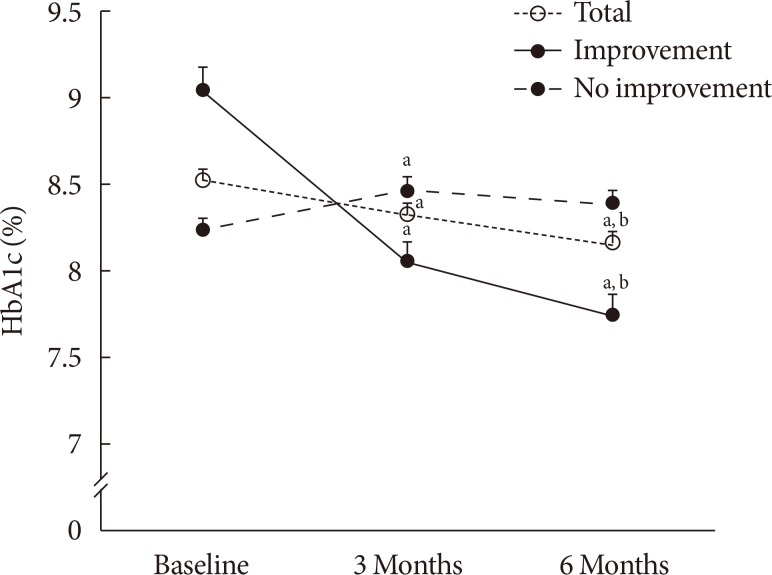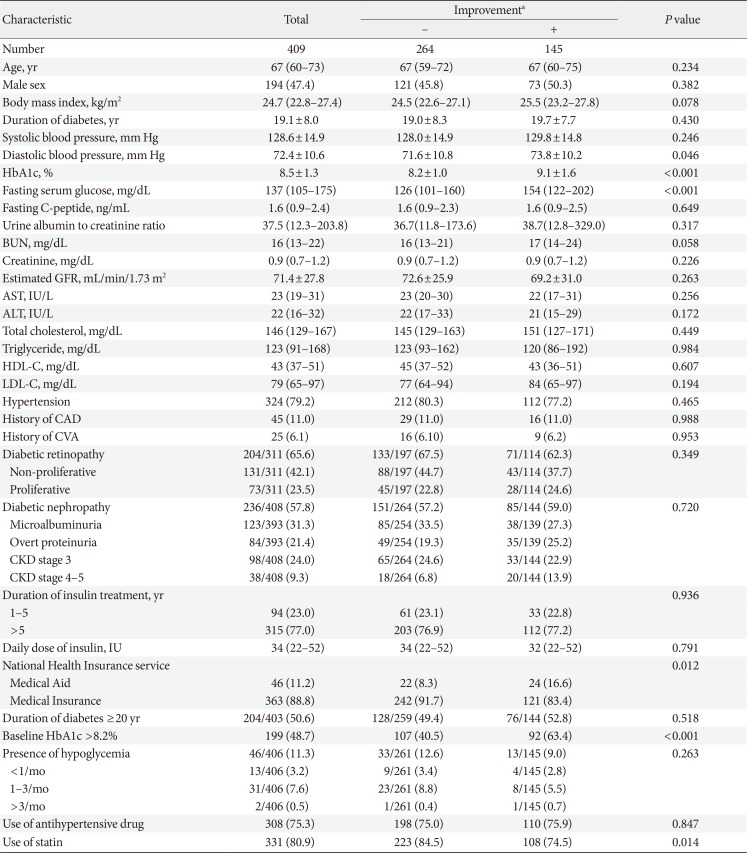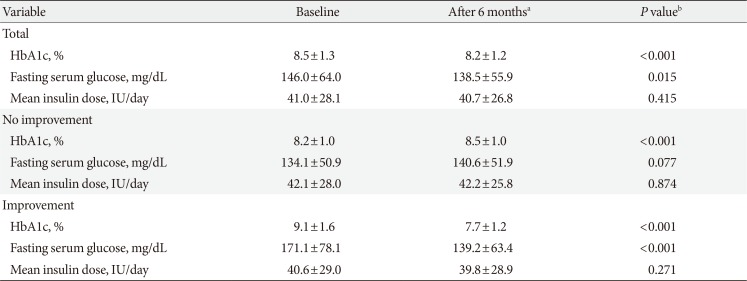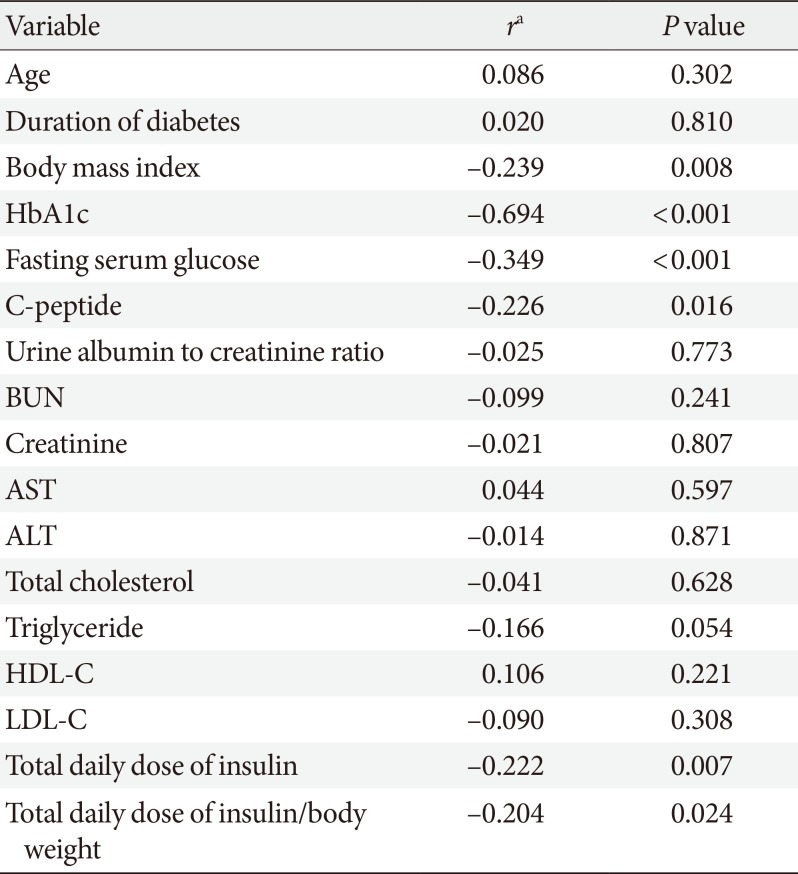1. Polonsky WH, Fisher L, Schikman CH, Hinnen DA, Parkin CG, Jelsovsky Z, Petersen B, Schweitzer M, Wagner RS. Structured self-monitoring of blood glucose significantly reduces A1C levels in poorly controlled, noninsulin-treated type 2 diabetes: results from the Structured Testing Program study. Diabetes Care. 2011; 34:262–267. PMID:
21270183.
2. Franciosi M, Pellegrini F, De Berardis G, Belfiglio M, Cavaliere D, Di Nardo B, Greenfield S, Kaplan SH, Sacco M, Tognoni G, Valentini M, Nicolucci A. QuED Study Group. The impact of blood glucose self-monitoring on metabolic control and quality of life in type 2 diabetic patients: an urgent need for better educational strategies. Diabetes Care. 2001; 24:1870–1877. PMID:
11679449.
3. Miller KM, Beck RW, Bergenstal RM, Goland RS, Haller MJ, McGill JB, Rodriguez H, Simmons JH, Hirsch IB. T1D Exchange Clinic Network. Evidence of a strong association between frequency of self-monitoring of blood glucose and hemoglobin A1c levels in T1D exchange clinic registry participants. Diabetes Care. 2013; 36:2009–2014. PMID:
23378621.

4. Diabetes Control and Complications Trial Research Group. Nathan DM, Genuth S, Lachin J, Cleary P, Crofford O, Davis M, Rand L, Siebert C. The effect of intensive treatment of diabetes on the development and progression of long-term complications in insulin-dependent diabetes mellitus. N Engl J Med. 1993; 329:977–986. PMID:
8366922.

5. Goldstein DE, Little RR, Lorenz RA, Malone JI, Nathan DM, Peterson CM. American Diabetes Association. Tests of glycemia in diabetes. Diabetes Care. 2004; 27(Suppl 1):S91–S93. PMID:
14693937.

6. Consensus statement on self-monitoring of blood glucose. Diabetes Care. 1987; 10:95–99. PMID:
3552518.
7. American Diabetes Association. Standards of medical care in diabetes: 2010. Diabetes Care. 2010; 33(Suppl 1):S11–S61. PMID:
20042772.
8. American Diabetes Association. Third-party reimbursement for diabetes care, self-management education, and supplies. Diabetes Care. 2014; 37(Suppl 1):S118–S119. PMID:
24357207.
9. Seong SC, Son MS. 2015 National Health Insurance Statistical Yearbook. Wonju: Health Insurance Review and Assessment Service of Korea;2016.
10. Yki-Jarvinen H, Rosenstock J, Duran-Garcia S, Pinnetti S, Bhattacharya S, Thiemann S, Patel S, Woerle HJ. Effects of adding linagliptin to basal insulin regimen for inadequately controlled type 2 diabetes: a ≥52-week randomized, double-blind study. Diabetes Care. 2013; 36:3875–3881. PMID:
24062327.
11. Hong ES, Khang AR, Yoon JW, Kang SM, Choi SH, Park KS, Jang HC, Shin H, Walford GA, Lim S. Comparison between sitagliptin as add-on therapy to insulin and insulin dose-increase therapy in uncontrolled Korean type 2 diabetes: CSI study. Diabetes Obes Metab. 2012; 14:795–802. PMID:
22443183.

12. Poolsup N, Suksomboon N, Rattanasookchit S. Meta-analysis of the benefits of self-monitoring of blood glucose on glycemic control in type 2 diabetes patients: an update. Diabetes Technol Ther. 2009; 11:775–784. PMID:
20001678.

13. Welschen LM, Bloemendal E, Nijpels G, Dekker JM, Heine RJ, Stalman WA, Bouter LM. Self-monitoring of blood glucose in patients with type 2 diabetes who are not using insulin: a systematic review. Diabetes Care. 2005; 28:1510–1517. PMID:
15920083.
14. Burge MR. Lack of compliance with home blood glucose monitoring predicts hospitalization in diabetes. Diabetes Care. 2001; 24:1502–1503. PMID:
11473098.

15. Rosenstock J, Davies M, Home PD, Larsen J, Koenen C, Schernthaner G. A randomised, 52-week, treat-to-target trial comparing insulin detemir with insulin glargine when administered as add-on to glucose-lowering drugs in insulin-naive people with type 2 diabetes. Diabetologia. 2008; 51:408–416. PMID:
18204830.

16. Karter AJ, Ackerson LM, Darbinian JA, D'Agostino RB Jr, Ferrara A, Liu J, Selby JV. Self-monitoring of blood glucose levels and glycemic control: the Northern California Kaiser Permanente Diabetes registry. Am J Med. 2001; 111:1–9. PMID:
11448654.

17. Simon J, Gray A, Clarke P, Wade A, Neil A, Farmer A. Diabetes Glycaemic Education and Monitoring Trial Group. Cost effectiveness of self monitoring of blood glucose in patients with non-insulin treated type 2 diabetes: economic evaluation of data from the DiGEM trial. BMJ. 2008; 336:1177–1180. PMID:
18420663.

18. O'Kane MJ, Bunting B, Copeland M, Coates VE. ESMON study group. Efficacy of self monitoring of blood glucose in patients with newly diagnosed type 2 diabetes (ESMON study): randomised controlled trial. BMJ. 2008; 336:1174–1177. PMID:
18420662.
19. Farmer A, Wade A, Goyder E, Yudkin P, French D, Craven A, Holman R, Kinmonth AL, Neil A. Impact of self monitoring of blood glucose in the management of patients with non-insulin treated diabetes: open parallel group randomised trial. BMJ. 2007; 335:132. PMID:
17591623.

20. Czupryniak L, Barkai L, Bolgarska S, Bronisz A, Broz J, Cypryk K, Honka M, Janez A, Krnic M, Lalic N, Martinka E, Rahelic D, Roman G, Tankova T, Varkonyi T, Wolnik B, Zherdova N. Self-monitoring of blood glucose in diabetes: from evidence to clinical reality in Central and Eastern Europe: recommendations from the international Central-Eastern European expert group. Diabetes Technol Ther. 2014; 16:460–475. PMID:
24716890.
21. Ji L, Su Q, Feng B, Shan Z, Hu R, Xing X, Xue Y. Glycemic control and self-monitoring of blood glucose in Chinese patients with type 2 diabetes on insulin: baseline results from the COMPASS study. Diabetes Res Clin Pract. 2016; 112:82–87. PMID:
26775249.

23. Ontario Ministry of Health And Long-Term Care. Blood glucose test strips. cited 2017 Sep 8. Available from:
http://www.health.gov.on.ca.
25. Schaefer E, Schnell G, Sonsalla J. Obtaining reimbursement in France and Italy for new diabetes products. J Diabetes Sci Technol. 2015; 9:156–161. PMID:
25550411.










 PDF
PDF ePub
ePub Citation
Citation Print
Print



 XML Download
XML Download